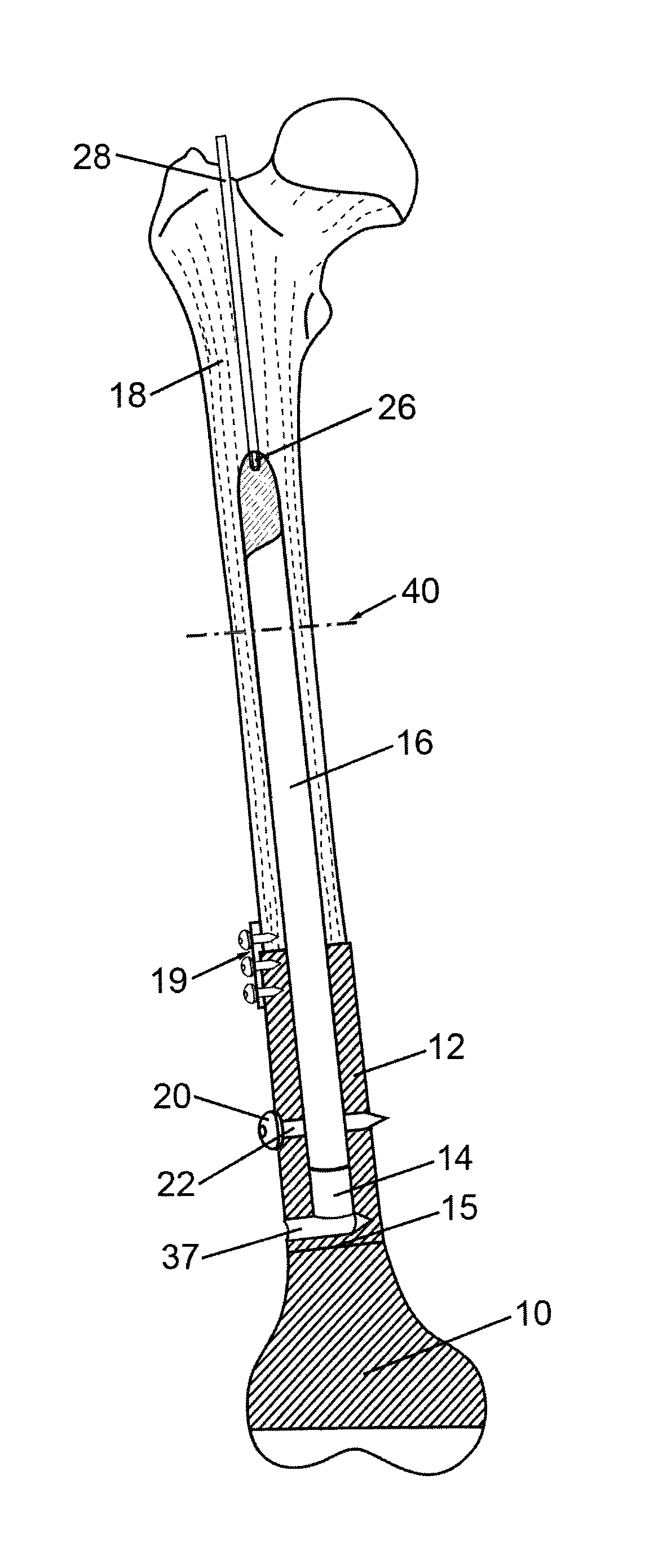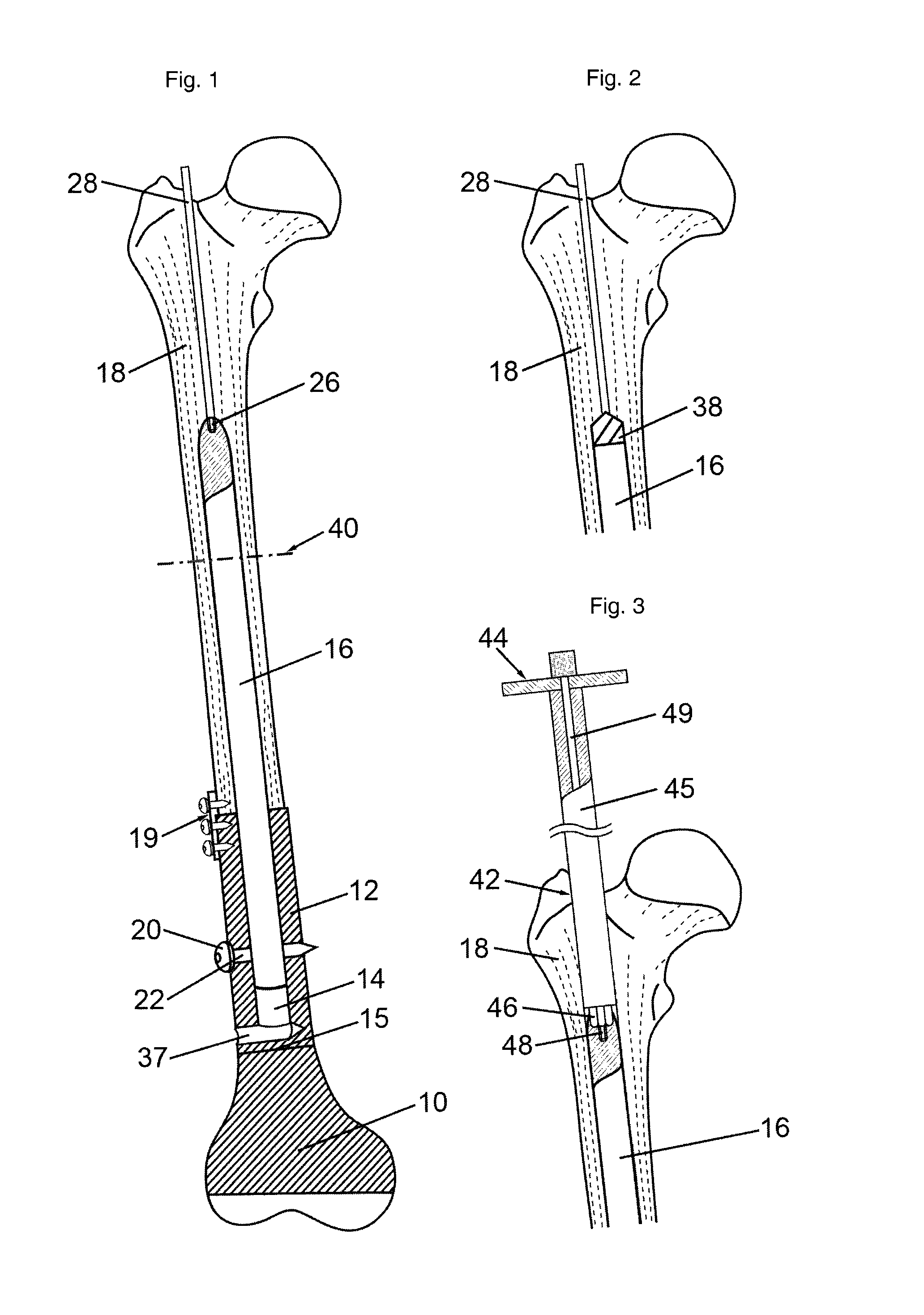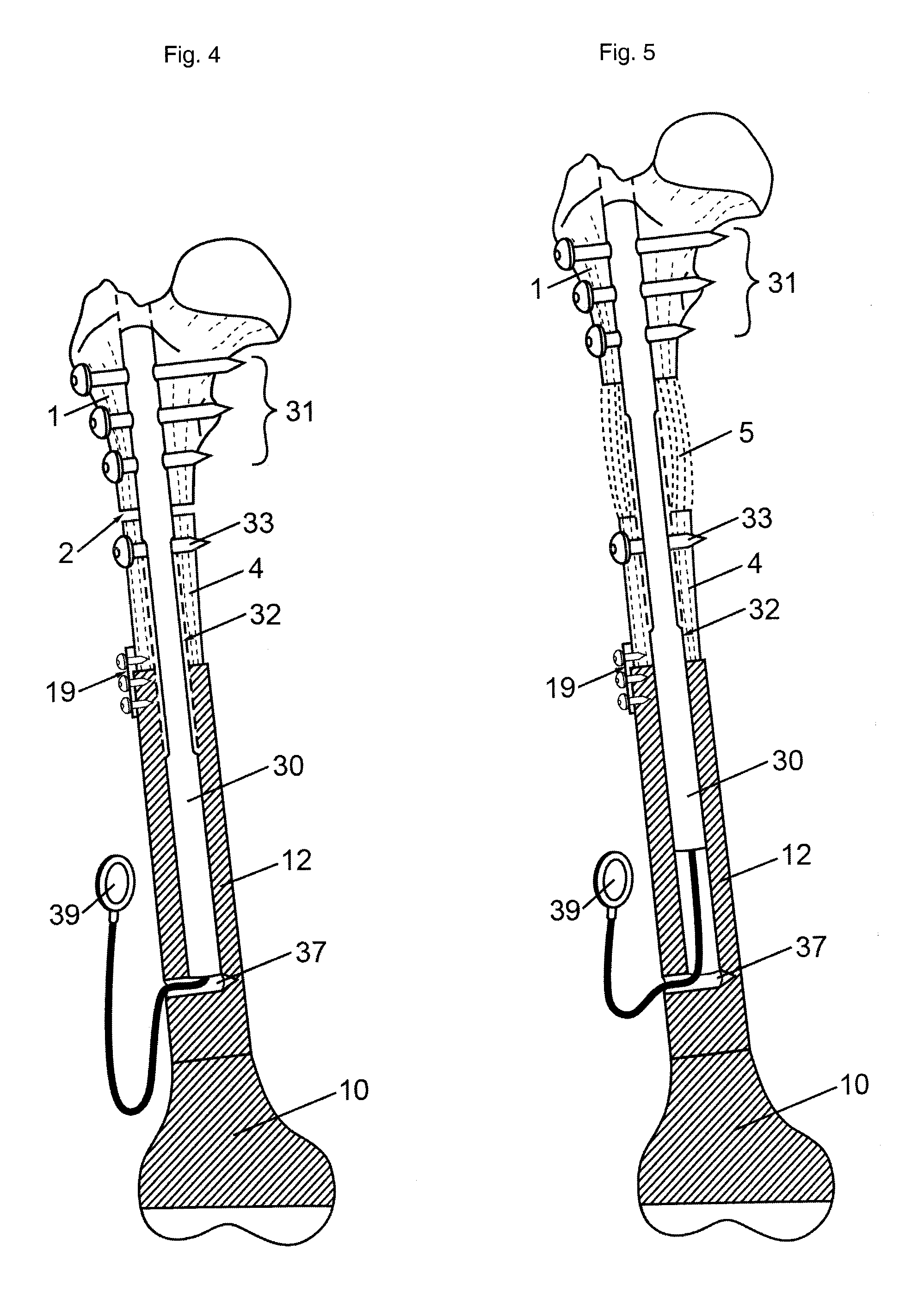Implantable prosthesis for replacing a human hip or knee joint and the adjoining bone sections
a technology for hip or knee joints and bone sections, applied in the field of implantable prostheses for replacing human hip or knee joints and adjoining bone sections, can solve the problems of large infection risk, inability to remain in place, and extensive operative exposure, and achieve the effect of facilitating the withdrawal of the shaft anchoring part and avoiding large resistan
- Summary
- Abstract
- Description
- Claims
- Application Information
AI Technical Summary
Benefits of technology
Problems solved by technology
Method used
Image
Examples
Embodiment Construction
[0037]The implantable prosthesis shown in FIG. 1 comprises a joint replacement part 10, which is releasably connected to a shaft replacement part 12 for exchange purposes. The shaft replacement part 12 is connected to a bone section 18 through a plate 19 and screws.
[0038]A cavity 14 in the form of a central blind hole is formed in the shaft replacement part 12, which cavity 14 has a bottom 15 at the side of the joint replacement part 10 (in practice, the shaft replacement part 12 will surely be bored through, because appropriately the joint replacement part and the shaft replacement part are connected by a central screw) and is open at its side facing away from the joint replacement part 10. The inner wall of the cavity 14 is provided with a slide friction reducing coating. A shaft anchoring part 16 having a polished wall is inserted in the cavity 14. At the bottom 15 there is provided a lateral bore 37 in the shaft replacement part 12 for passing through a connection element, which...
PUM
 Login to View More
Login to View More Abstract
Description
Claims
Application Information
 Login to View More
Login to View More - R&D
- Intellectual Property
- Life Sciences
- Materials
- Tech Scout
- Unparalleled Data Quality
- Higher Quality Content
- 60% Fewer Hallucinations
Browse by: Latest US Patents, China's latest patents, Technical Efficacy Thesaurus, Application Domain, Technology Topic, Popular Technical Reports.
© 2025 PatSnap. All rights reserved.Legal|Privacy policy|Modern Slavery Act Transparency Statement|Sitemap|About US| Contact US: help@patsnap.com



